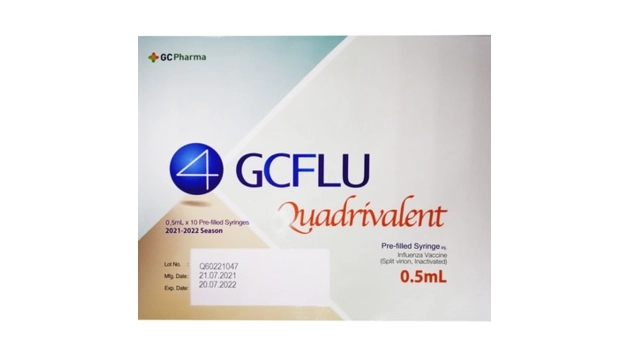Vaccine "GC Flu Quadrivalent"

Use of GiC Flu Quadrivalent vaccine
The vaccine should be administered by intramuscular injection.
The recommended intramuscular injection site for children aged 6 to 35 months is the anterolateral thigh (or the deltoid muscle if muscle mass is sufficient), and for children aged 36 months and older the deltoid muscle .
-
What are the indications for the GiC Flu Quadrivalent vaccine?
Active immunization of adults and children 6 months of age and older to prevent influenza caused by the influenza A virus subtypes and influenza B virus types contained in this vaccine.
-
What are the contraindications to the GiC Flu Quadrivalent vaccine?
Vaccination with the drug is contraindicated for the following categories of patients:
- patients with hypersensitivity to vaccine components;
- patients with hypersensitivity to eggs and chicken protein, another chicken component;
- patients with fever or insufficient nutrition;
- patients with chronic kidney or liver failure, acute cardiovascular and respiratory diseases, other infectious diseases;
- persons who had convulsions within 1 year before vaccination;
- patients with Guillain-Barré syndrome within 6 weeks after previous influenza vaccination or patients with neurological disorders;
- persons with immunodeficiency;
- patients until full recovery or persons in the incubation period of the disease;
- persons who have had a fever the day before or allergy symptoms, for example, a generalized rash with a previous vaccination.
-
What are the side effects of the GiC Flu Quadrivalent vaccine?
Possible local reactions, such as:
- redness;
- edema;
- pain;
Common reactions such as:
- fever;
- chills;
- headache;
- increased fatigue;
- vomiting
Such reactions, as a rule, pass within 2-3 days.
Rarely, acute disseminated encephalomyelitis may develop.
Fever, headache, convulsions, dyskinesia, and confusion usually occur within 2 weeks of vaccine administration. If these symptoms are suspected, appropriate treatment is carried out, the diagnosis must be confirmed by MRI or other diagnostic methods.
Very rarely can be observed:
- allergic reaction;
- anaphylactic shock.
Temporary disorders of the central and peripheral nervous system are rarely possible. Cases were reported:
- paralysis;
- neuralgia;
- cerebral hemorrhage;
- inflammation of the nervous system (for example, Guillain-Barré syndrome).